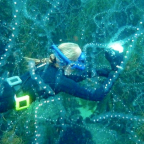
A bid to take whale conservation to the UN General Assembly failed at the International Whaling Commission (IWC) after criticism from hunting nations.
The motion said many species are not covered by IWC rules, and criticised Japan’s scientific whaling programmes.
The delegates’ final act was to decide to hold meetings every two years.
Meanwhile, the Danish and Greenland governments will “reflect” on whaling options for Greenland’s Inuit after the IWC denied a bid to raise quotas.
The options include setting quotas unilaterally without the IWC’s explicit approval, or even withdrawing from the body. Either would be intensely controversial.
Nothing caused more controversy here, though, than South Korea’s announcement that it was preparing to allow some of its fishermen to hunt whales under re...
Read More












Social Profiles